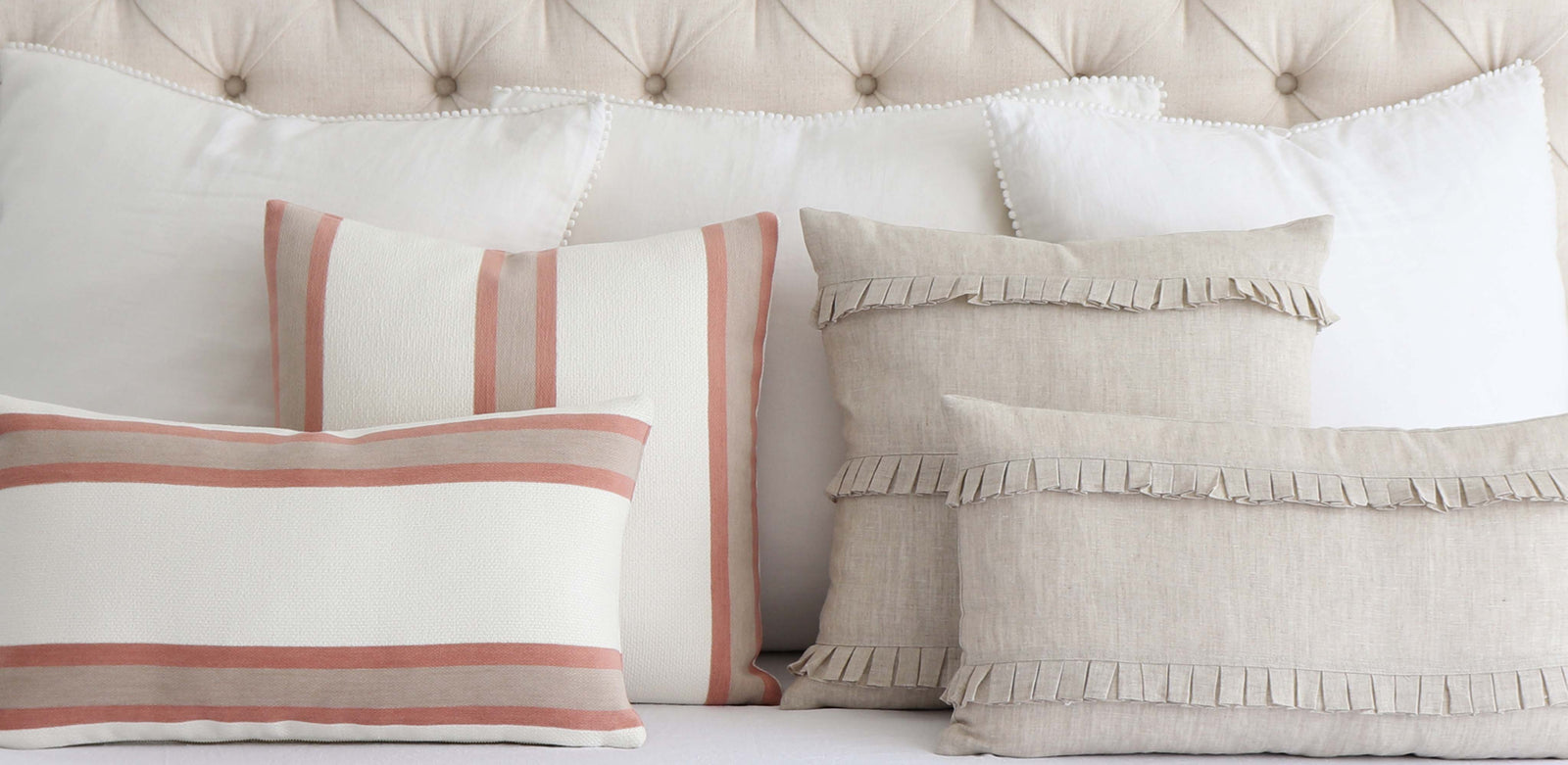

Articles
Where To Put Decorative Pillows When Sleeping
Modified: October 20, 2024
Discover the best placement options for decorative pillows when sleeping in this informative and carefully curated collection of articles. Enhance your bedroom decor with these expert tips.
(Many of the links in this article redirect to a specific reviewed product. Your purchase of these products through affiliate links helps to generate commission for Storables.com, at no extra cost. Learn more)
Introduction
Decorative pillows are not only great accessories for enhancing the overall aesthetic of a bedroom, but they can also serve a functional purpose during sleep. These pillows, often adorned with stylish designs and patterns, can be strategically placed to provide support and improve sleep quality. While their primary function is to add a decorative touch to a bedding ensemble, they can also be used to optimize sleep positioning and ensure a comfortable rest. In this article, we will explore the various ways you can incorporate decorative pillows into your sleep routine and find the perfect placement for a good night”s rest.
Many individuals wonder why decorative pillows are used, particularly since they are not always practical for actual sleep. However, the beauty of decorative pillows lies in their versatility and ability to enhance the overall design scheme of a bedroom. These pillows often come in a wide array of colors, patterns, and textures, allowing you to personalize your sleeping space with ease. While their primary purpose is for visual appeal, they can also be used in a functional manner to optimize sleep positioning.
Proper sleep positioning is essential for a restful and rejuvenating night”s sleep. The way you position your body while sleeping can have a significant impact on your spinal alignment, breathing patterns, and overall comfort. The use of decorative pillows can help ensure that you maintain the proper sleeping posture, allowing for a more comfortable and uninterrupted sleep.
There are a few common positions for sleeping, and the placement of decorative pillows can vary depending on the sleeping position. The three most common sleep positions are back sleeping, side sleeping, and stomach sleeping. Each of these positions requires different pillow placements to provide adequate support and alignment.
In the following sections, we will discuss the different placement strategies for decorative pillows based on each sleep position. Whether you are a back sleeper, side sleeper, or stomach sleeper, we will guide you on how to position your decorative pillows for optimal support and a cozy, luxurious sleep experience.
Key Takeaways:
- Decorative pillows can enhance sleep quality by optimizing sleep positioning for back, side, and stomach sleepers. They provide support, improve spinal alignment, and contribute to a more restful night’s sleep.
- Beyond aesthetics, decorative pillows serve alternative sleep-related purposes such as addressing snoring, acid reflux, pregnancy discomfort, and post-surgery support. They offer versatile solutions for a comfortable sleep experience.
Read more: Where To Put Mirror In Dining Room
Why Decorative Pillows are Used?
Decorative pillows are not just meant to add a touch of elegance and style to your bedroom decor, but they also serve a functional purpose when it comes to sleep. These pillows can provide additional support, improve sleep quality, and enhance overall comfort. Let’s explore some of the reasons why decorative pillows are commonly used:
- Aesthetics: One of the primary reasons why people use decorative pillows is for their visual appeal. These pillows come in a wide variety of shapes, sizes, colors, and patterns, allowing you to easily match them with your bedroom decor. They can add a pop of color or enhance the overall theme of your room, creating a visually pleasing and inviting space to relax in.
- Personalization: Decorative pillows offer an opportunity to express your personality and style. By choosing pillows that reflect your unique taste and preferences, you can infuse your personal touch into your bedroom design. Whether you prefer bold, vibrant patterns or soft, muted tones, there are decorative pillows available to suit every aesthetic preference.
- Comfort: While the primary purpose of decorative pillows is not necessarily for sleep support, they can still contribute to your overall comfort during sleep. By strategically placing these pillows, you can create a more comfortable sleep environment by providing additional cushioning and support where needed.
- Sleep Positioning: Decorative pillows can be utilized to optimize sleep positioning and ensure proper alignment of your body while you sleep. For example, placing a pillow under your knees when sleeping on your back can help alleviate pressure on your lower back and promote better spinal alignment. Similarly, placing a pillow between your knees when sleeping on your side can help keep your hips in alignment and reduce strain on your lower back.
- Relaxation: Decorative pillows can also contribute to a sense of relaxation and tranquility in your bedroom. Whether you use them as support while reading a book in bed or simply as an inviting and comforting element to help you unwind, these pillows can create a cozy and serene atmosphere that promotes restful sleep.
While decorative pillows may not be a necessity for sleep, their aesthetic appeal and functional benefits make them a popular choice among individuals who value both style and comfort in their bedroom. So, next time you admire a well-styled bed with decorative pillows, remember that in addition to their visual charm, they can also enhance your sleep experience and contribute to a blissful night’s rest.
The Importance of Proper Sleep Positioning
Proper sleep positioning is crucial for achieving a restful and rejuvenating night’s sleep. The way you position your body while sleeping can impact your spinal alignment, breathing patterns, and overall comfort. By understanding the importance of proper sleep positioning, you can optimize your sleep quality and wake up feeling refreshed. Here’s why it matters:
- Spinal Alignment: Maintaining proper spinal alignment while sleeping is essential for the health of your spine and overall posture. Improper alignment can lead to discomfort, muscle strain, and even long-term spinal issues. By positioning your body correctly during sleep, you can help ensure that your spine maintains its natural curvature and relieve any undue pressure on your back.
- Breathing and Sleep Apnea: The position in which you sleep can affect your breathing patterns. Certain positions, like sleeping on your back, can cause your tongue and soft tissues to obstruct your airway, contributing to issues like snoring and sleep apnea. By adopting sleep positions that promote open airways, you can improve your breathing and reduce the risk of sleep-disordered breathing conditions.
- Joint and Muscle Support: Proper sleep positioning can provide optimal support to your joints and muscles, reducing the likelihood of waking up with stiffness or soreness. By aligning your body in a way that minimizes pressure points and promotes proper circulation, you can enhance the recovery process and wake up feeling more refreshed and pain-free.
- Improved Digestion: Sleeping on your left side can aid in digestion by allowing gravity to help food move through your intestinal tract more efficiently. This position can also help reduce the likelihood of acid reflux or heartburn, promoting better sleep quality.
- Comfort and Quality Sleep: Ultimately, proper sleep positioning contributes to overall comfort and ensures undisturbed sleep. By finding a sleep position that aligns your body and supports your individual needs, you can minimize tossing and turning and achieve a deeper, more restorative sleep.
Now that we understand the importance of proper sleep positioning, it’s essential to know how to optimize our sleeping positions for optimal rest. The placement of decorative pillows can play a significant role in achieving proper sleep positioning, providing support and alignment in different sleep positions.
In the following sections, we will explore the specific pillow placement techniques for each sleep position, including back sleeping, side sleeping, and stomach sleeping. By using decorative pillows strategically, you can enhance the benefits of proper sleep positioning and wake up feeling refreshed and rejuvenated.
Common Positions for Sleeping
Everyone has their preferred sleeping position, and the way you position your body during sleep can significantly impact your comfort and overall sleep quality. While there are various sleep positions, the most common ones include back sleeping, side sleeping, and stomach sleeping. Understanding these positions can help you determine the best way to utilize decorative pillows for optimal support and alignment.
1. Back Sleeping
Back sleeping, also known as supine sleeping, involves lying flat on your back with your face and torso facing upwards. This position is considered one of the best for spinal alignment. It helps distribute your body weight evenly and reduces the likelihood of developing pressure points. However, back sleeping can cause snoring and sleep apnea in some individuals.
Read also: 14 Amazing Pillows For Sleeping for 2025
2. Side Sleeping
Side sleeping involves lying on either your left or right side, with your body aligned horizontally. Side sleeping is a popular position and offers several benefits, including reduced snoring and acid reflux symptoms. It can also help alleviate sleep apnea symptoms. However, side sleeping can potentially lead to shoulder and hip pain if proper support is not provided.
3. Stomach Sleeping
Stomach sleeping, also known as prone sleeping, involves lying face-down with your stomach against the mattress. While this position can alleviate snoring and sleep apnea symptoms for some individuals, it is generally not recommended due to the strain it puts on the neck and spine. Stomach sleeping can lead to neck and back pain, as well as inadequate support for the body’s natural curvature.
It’s important to note that everyone’s body is unique, and sleep positions that work well for one person may not be suitable for another. Therefore, it’s essential to pay attention to your comfort and adjust your sleep position as needed.
Now that we’ve discussed the common sleep positions, let’s move on to explore where to place decorative pillows for each position. By utilizing decorative pillows strategically, you can enhance the comfort and support of your preferred sleep position, ensuring a more restful and rejuvenating night’s sleep.
Where to Place Decorative Pillows for Back Sleepers
Back sleepers have a natural advantage when it comes to spinal alignment, as lying flat on the back allows for better support and distribution of body weight. However, using decorative pillows can further enhance comfort and maintain proper sleep positioning for back sleepers. Here are some suggested placements for decorative pillows:
1. Head Support
Start by placing a medium-firm pillow under your head to provide proper support for your neck and keep it aligned with your spine. The pillow should be neither too high nor too low, creating a neutral position for your head.
Read more: How To Stack Pillows To Sleep Upright
2. Lumbar Support
To maintain the natural curve of your lower back and provide additional support, consider placing a smaller pillow or rolled-up towel under your lower back. This can help alleviate any pressure on the lumbar area and reduce the risk of lower back pain.
3. Knee Support
To further promote spinal alignment and reduce strain on the lower back, you can place a pillow under your knees. This elevation helps keep the spine in a more neutral position and reduces pressure on the lower back.
4. Arm Support
If you tend to sleep with your arms elevated or extended, you can use a small decorative pillow or cushion to support your arms and keep them in a comfortable position. This can prevent any strain or discomfort in the shoulders and elbows.
By utilizing decorative pillows in these recommended placements for back sleepers, you can improve spinal alignment, alleviate pressure points, and enhance overall comfort during sleep. Remember to choose pillows that provide adequate support without being too firm or too soft to ensure a restful and rejuvenating night’s sleep.
Where to Place Decorative Pillows for Side Sleepers
Side sleeping is a popular sleep position that offers numerous benefits, including reduced snoring and improved digestion. However, side sleepers often require additional support to maintain proper spinal alignment. By strategically placing decorative pillows, side sleepers can enhance their comfort and promote a more restful sleep. Here’s where to place decorative pillows for side sleepers:
Read more: Why Do We Sleep On Pillows
1. Head and Neck Support
Begin by using a firm or medium-firm pillow that provides proper support for your head and neck. The pillow should fill the gap between your shoulder and ear to keep your spine aligned in a neutral position. Ensure that the pillow is not too high or too low, as it can strain your neck or create an uncomfortable angle.
2. Shoulder Support
Place a firm pillow or a body pillow in front of you, hugging it with your top arm. This will support your shoulder and help maintain proper alignment while preventing it from collapsing inward. The pillow should be thick enough to keep your spine in a straight line from your neck to your hips.
3. Hip and Knee Support
To alleviate pressure on your hips and lower back and ensure proper spinal alignment, consider placing a pillow between your knees. This helps to keep your hips level and prevents your top leg from pulling your spine out of alignment. A contoured knee pillow can be ideal for this purpose.
4. Body Support
If you prefer cuddling a pillow for additional support, try using a body pillow that extends along your side. This can provide support for your torso, lower back, and knees simultaneously, ensuring better alignment and reducing strain on your spine.
By incorporating decorative pillows in these suggested placements for side sleepers, you can optimize spinal alignment, alleviate pressure points, and enhance overall comfort during sleep. Keep in mind that the pillows should be appropriately firm or soft to provide support without sacrificing comfort. Experiment with different pillow sizes and materials to find the perfect combination that offers optimal support for your individual needs.
Where to Place Decorative Pillows for Stomach Sleepers
Stomach sleeping, also known as prone sleeping, is the least recommended sleep position due to the strain it can put on the neck and spine. However, if you find this position most comfortable, there are ways to improve your sleep posture and promote better alignment by using decorative pillows strategically. Here’s where to place decorative pillows for stomach sleepers:
1. Head Positioning
When sleeping on your stomach, it’s essential to minimize strain on your neck by keeping your head in a neutral position. A thin, soft pillow or even no pillow at all is recommended to prevent excessive neck extension. Placing a small decorative pillow or a folded towel under your forehead can provide gentle support and keep your head aligned with your spine.
2. Hip Support
Stomach sleeping can cause strain on your lower back and hips, as they can sink down and misalign with the rest of your body. To alleviate this potential discomfort, consider placing a thin pillow or a rolled-up towel under your hips. This elevation helps maintain a more neutral alignment and reduces strain on your lower back.
3. Arm Placement
When sleeping on your stomach, finding a comfortable position for your arms can be challenging. Placing a small decorative pillow or cushion under your top arm can help prevent numbness or discomfort. You can also try tucking your arms under the pillow to alleviate any pressure on your shoulders.
It’s important to note that stomach sleeping is generally not recommended due to the strain it can place on your neck and spine. If possible, try to gradually transition to a different sleep position that promotes better spinal alignment, such as side or back sleeping.
If you continue to prefer stomach sleeping, using decorative pillows in these suggested placements can help minimize discomfort and enhance your sleep posture. However, it’s crucial to listen to your body and make adjustments accordingly. Ultimately, finding the right balance between comfort and alignment will contribute to a more restful and rejuvenating night’s sleep.
Read more: Choosing The Perfect Pillow For Better Sleep
Alternative Uses for Decorative Pillows During Sleep
While decorative pillows are primarily used for their aesthetic appeal and sleep positioning benefits, they can also serve alternative purposes during sleep. These versatile pillows can be used creatively to enhance comfort, support, and even address specific sleep-related issues. Here are some alternative uses for decorative pillows during sleep:
1. Snoring and Sleep Apnea
If you or your partner snore or suffer from sleep apnea, strategically placing a pillow under your head can help elevate your upper body. This slight elevation can open up the airways, allowing for better airflow and reducing the intensity of snoring or sleep apnea symptoms. Experiment with different pillow heights to find the best position that works for you.
2. Acid Reflux and Heartburn
Individuals who experience acid reflux or heartburn can benefit from using a wedge-shaped decorative pillow to elevate their upper body while sleeping. This elevated position helps prevent stomach acid from flowing back into the esophagus, reducing the discomfort associated with these conditions. Ensure the pillow is supportive but not too high for optimal comfort.
3. Pregnancy Support
Pregnant individuals may find it challenging to get comfortable during sleep due to the extra weight and changes in their body. Decorative pillows, such as full-body pregnancy pillows or smaller wedge pillows, can provide support and relieve pressure on the belly, back, and hips. These pillows can be positioned between the legs, behind the back, or under the growing belly to promote better sleep quality.
Read more: Where To Put Desk In Living Room
4. Post-Surgery Support
After undergoing surgery, finding a comfortable sleep position can be challenging. Decorative pillows can be used to provide targeted support and cushioning for specific areas of the body that may be sensitive or healing. Depending on the surgical site, pillows can be placed under the legs, arms, back, or other areas to alleviate discomfort and facilitate a more restful sleep.
5. Relaxation and Meditation
Decorative pillows can also be used to create a cozy and supportive environment for relaxation and meditation. By arranging pillows in a comfortable sitting or reclined position, you can create a designated space for quiet contemplation, deep breathing, or mindfulness practices. Experiment with different pillow arrangements to find the most comfortable and supportive setup for your relaxation or meditation sessions.
While decorative pillows primarily serve as stylish accessories for the bedroom, they can also be utilized for various practical purposes during sleep. Whether it’s addressing specific sleep issues, providing support during pregnancy or post-surgery recovery, or even enhancing relaxation practices, these versatile pillows can contribute to a more comfortable and satisfying sleep experience.
Conclusion
Decorative pillows not only add a touch of elegance and style to your bedroom decor, but they can also serve a functional purpose during sleep. By strategically placing these pillows, you can enhance sleep positioning, provide support, and improve overall comfort. Whether you are a back sleeper, side sleeper, or stomach sleeper, decorative pillows can help create a more restful and rejuvenating sleep experience.
We explored the different placements for decorative pillows based on each sleep position. For back sleepers, pillows can be used to support the head, maintain lumbar alignment, and provide knee and arm support. Side sleepers can benefit from pillows that support the head, hug the shoulder, cushion the knees, and offer body support. Stomach sleepers can use pillows to maintain proper head and hip positioning while considering the unique challenges of this sleep position.
Additionally, decorative pillows can serve alternative purposes during sleep. They can be used to address issues such as snoring, sleep apnea, acid reflux, and pregnancy discomfort. They can also create a supportive and cozy environment for relaxation and meditation.
Remember, the key to using decorative pillows effectively is finding the right balance between support and comfort. Choose pillows with the right firmness and size to suit your individual needs. Experiment with different placements and pillow combinations to find the setup that works best for you.
In conclusion, decorative pillows are not just beautiful accessories for your bed; they can significantly enhance your sleep experience. By incorporating them into your sleep routine, you can optimize sleep positioning, improve spinal alignment, alleviate pressure points, and achieve a more restful and rejuvenating night’s sleep.
So, go ahead and explore the world of decorative pillows to not only enhance the look of your bedroom but also maximize comfort and support for a blissful night of sleep.
Frequently Asked Questions about Where To Put Decorative Pillows When Sleeping
Was this page helpful?
At Storables.com, we guarantee accurate and reliable information. Our content, validated by Expert Board Contributors, is crafted following stringent Editorial Policies. We're committed to providing you with well-researched, expert-backed insights for all your informational needs.
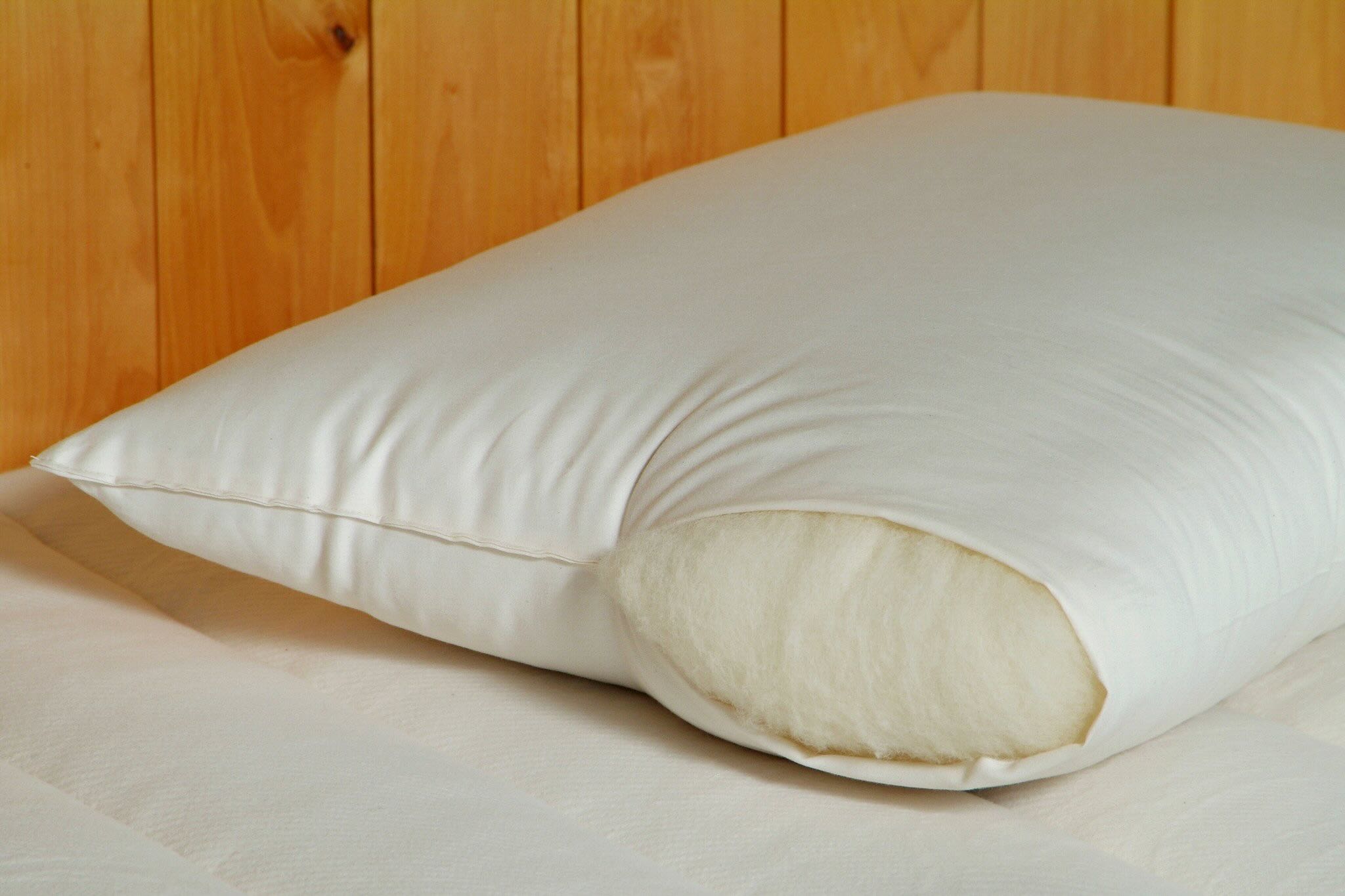
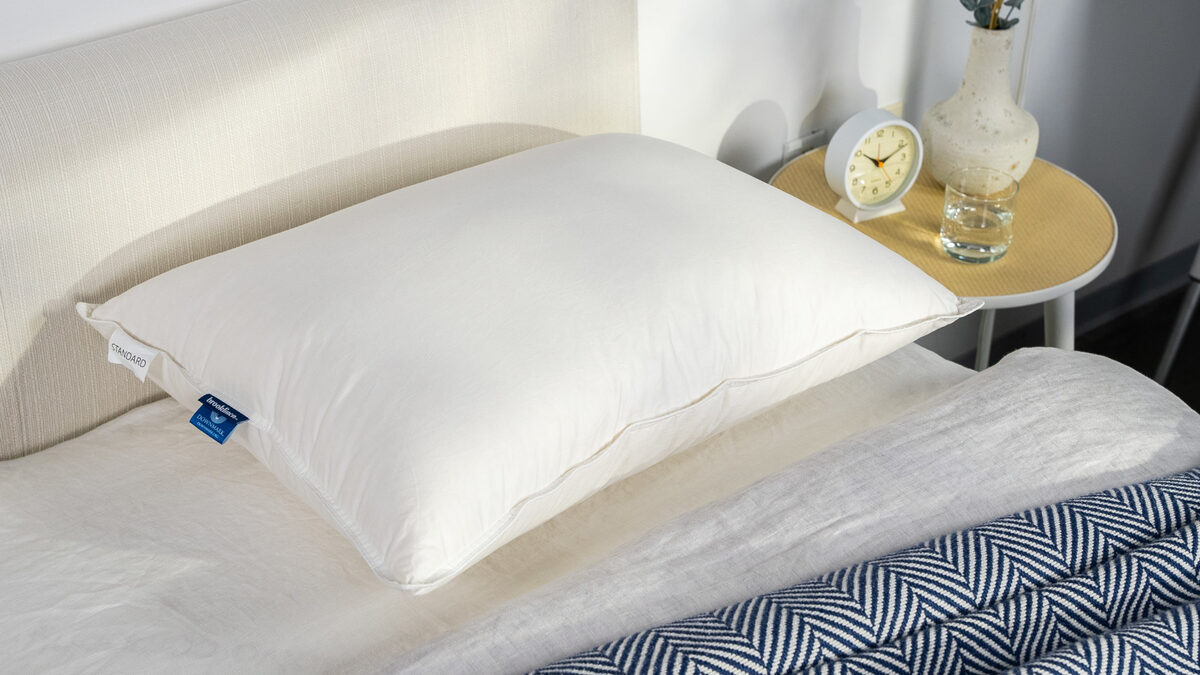
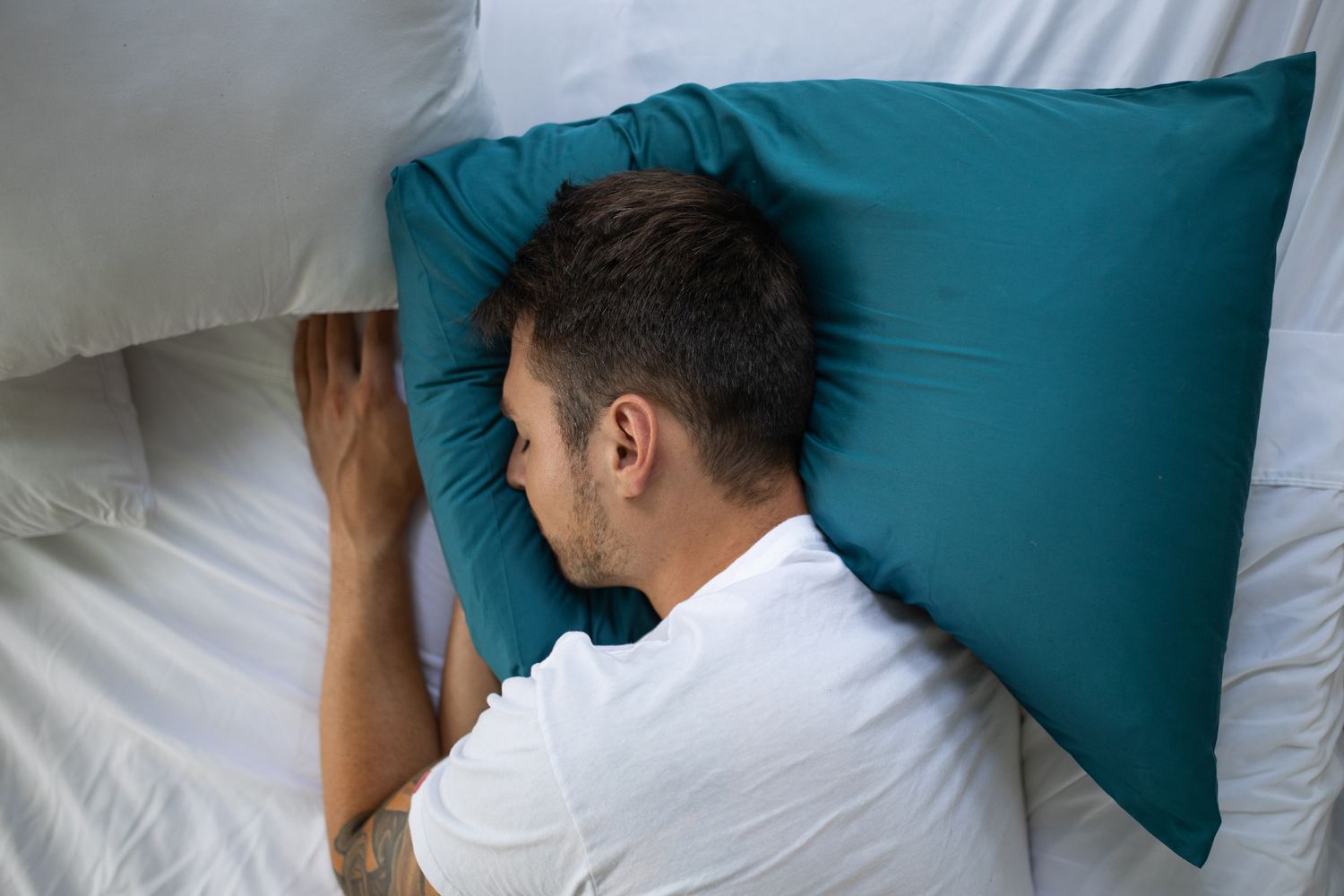
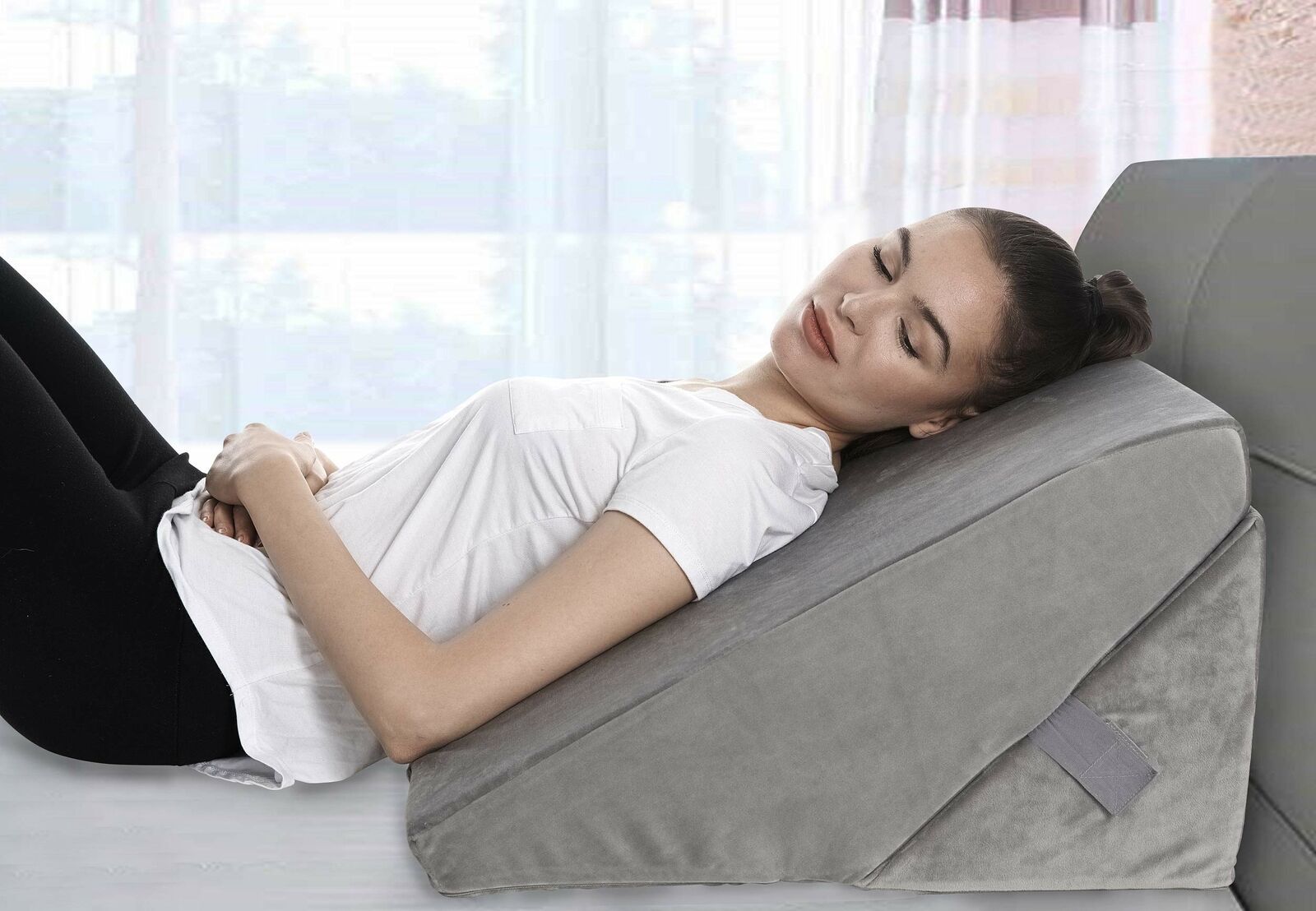
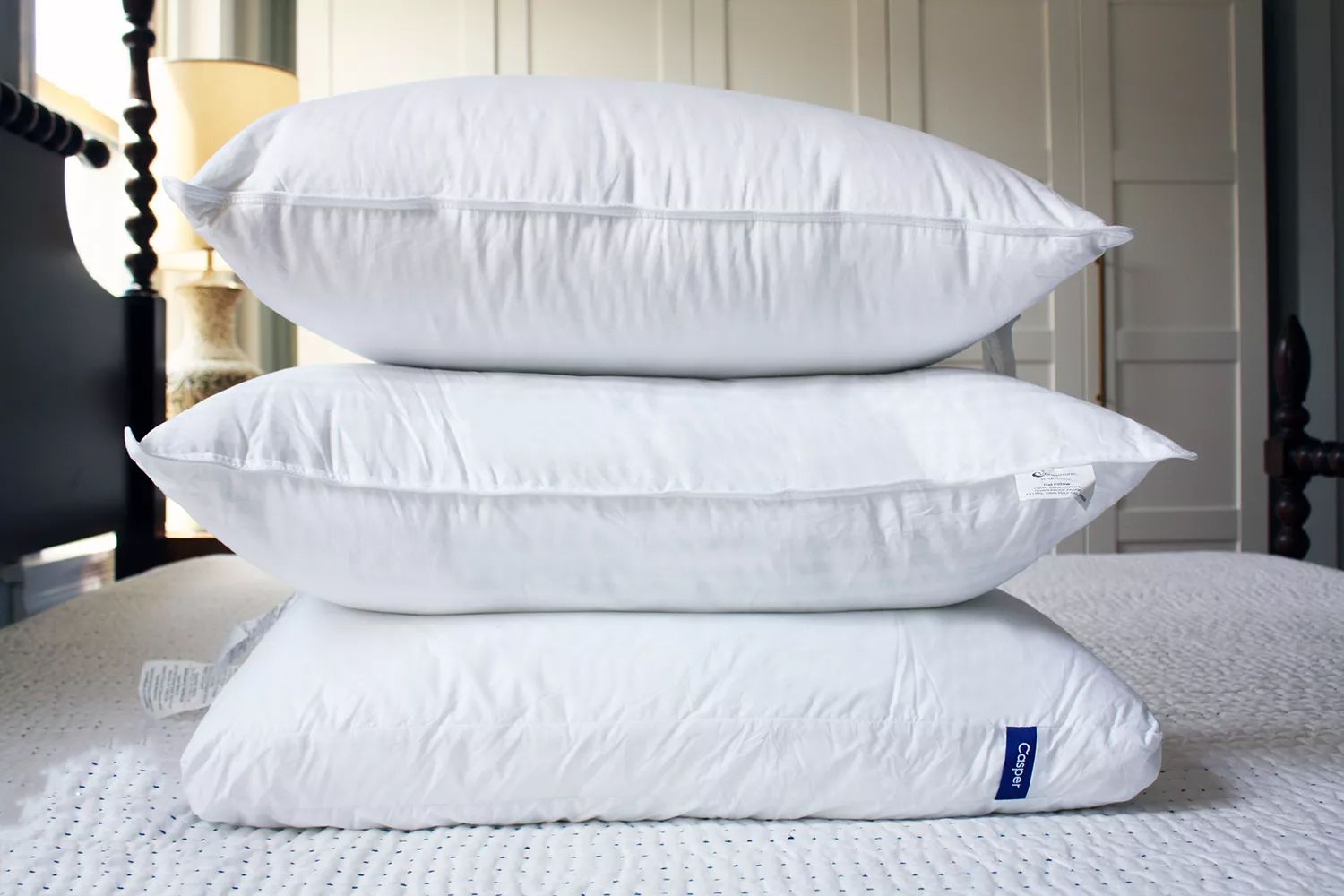

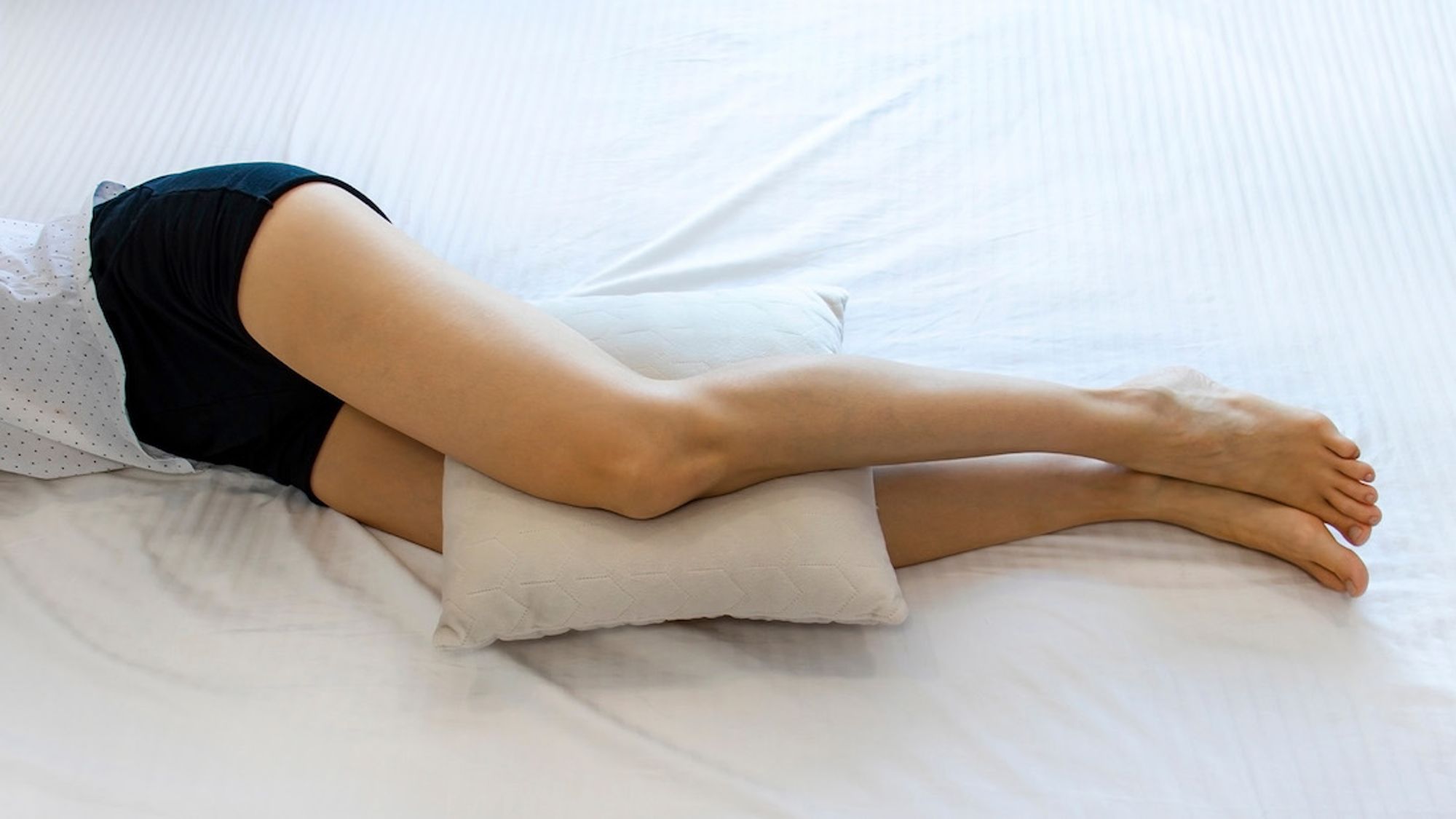
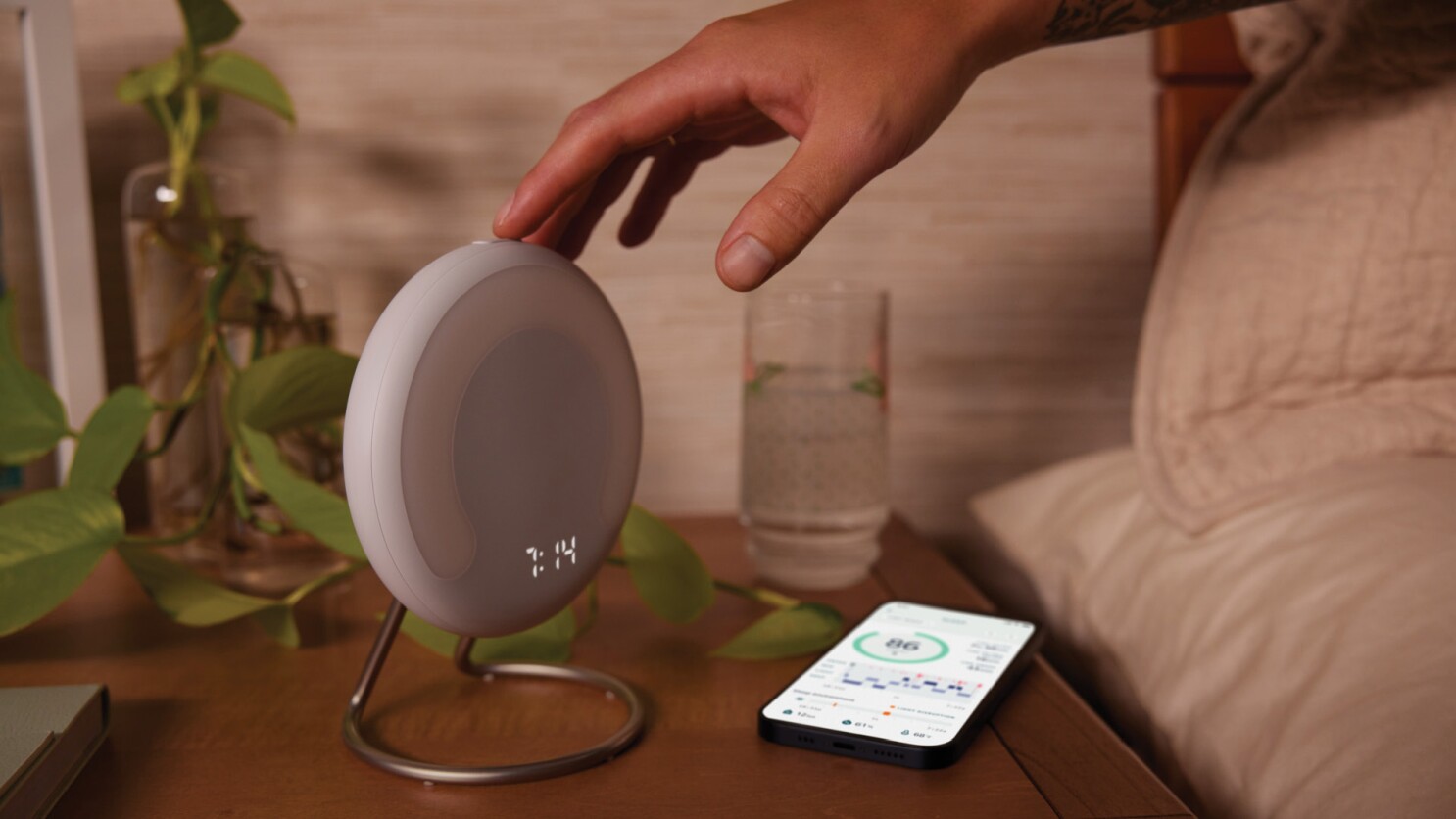
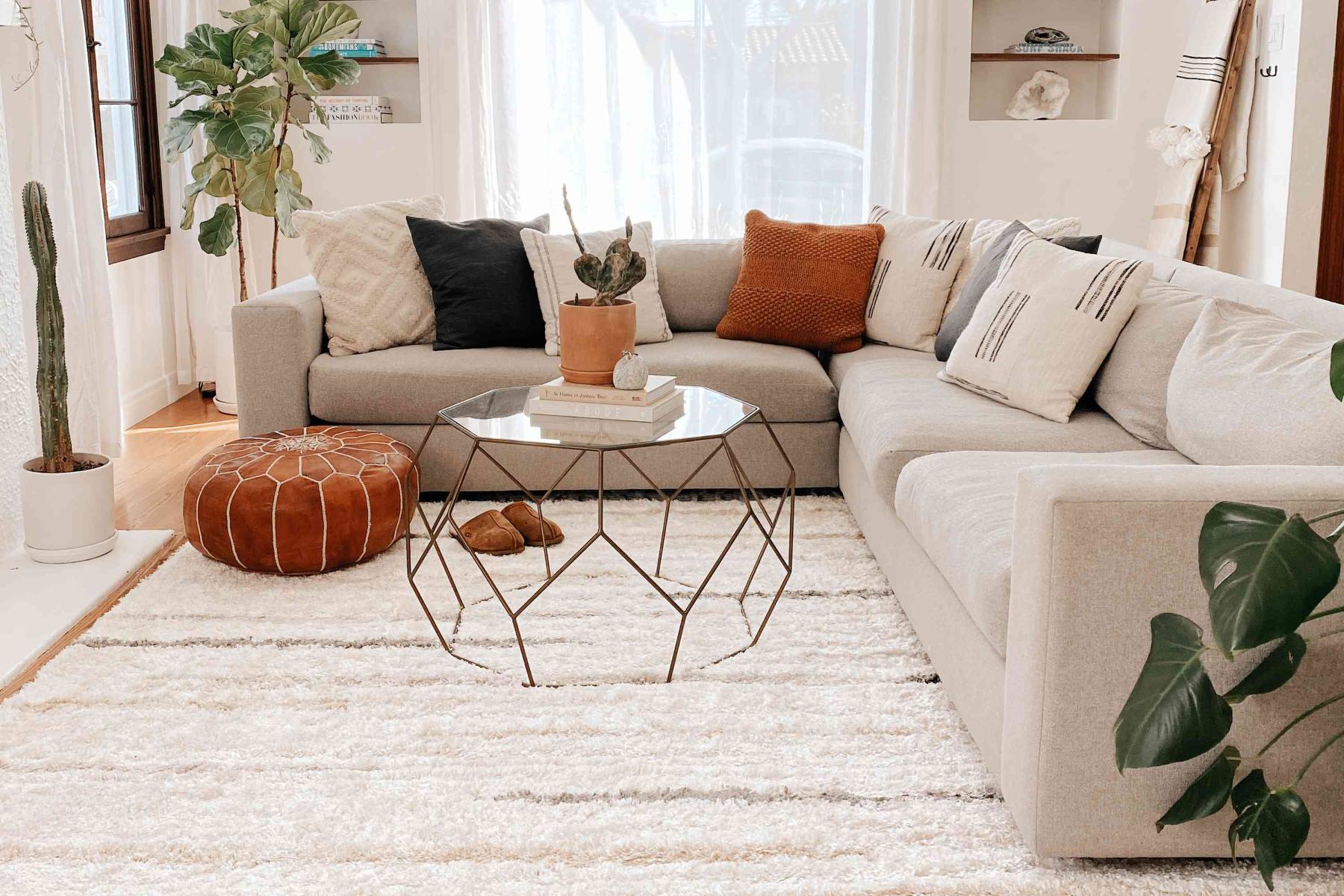

0 thoughts on “Where To Put Decorative Pillows When Sleeping”